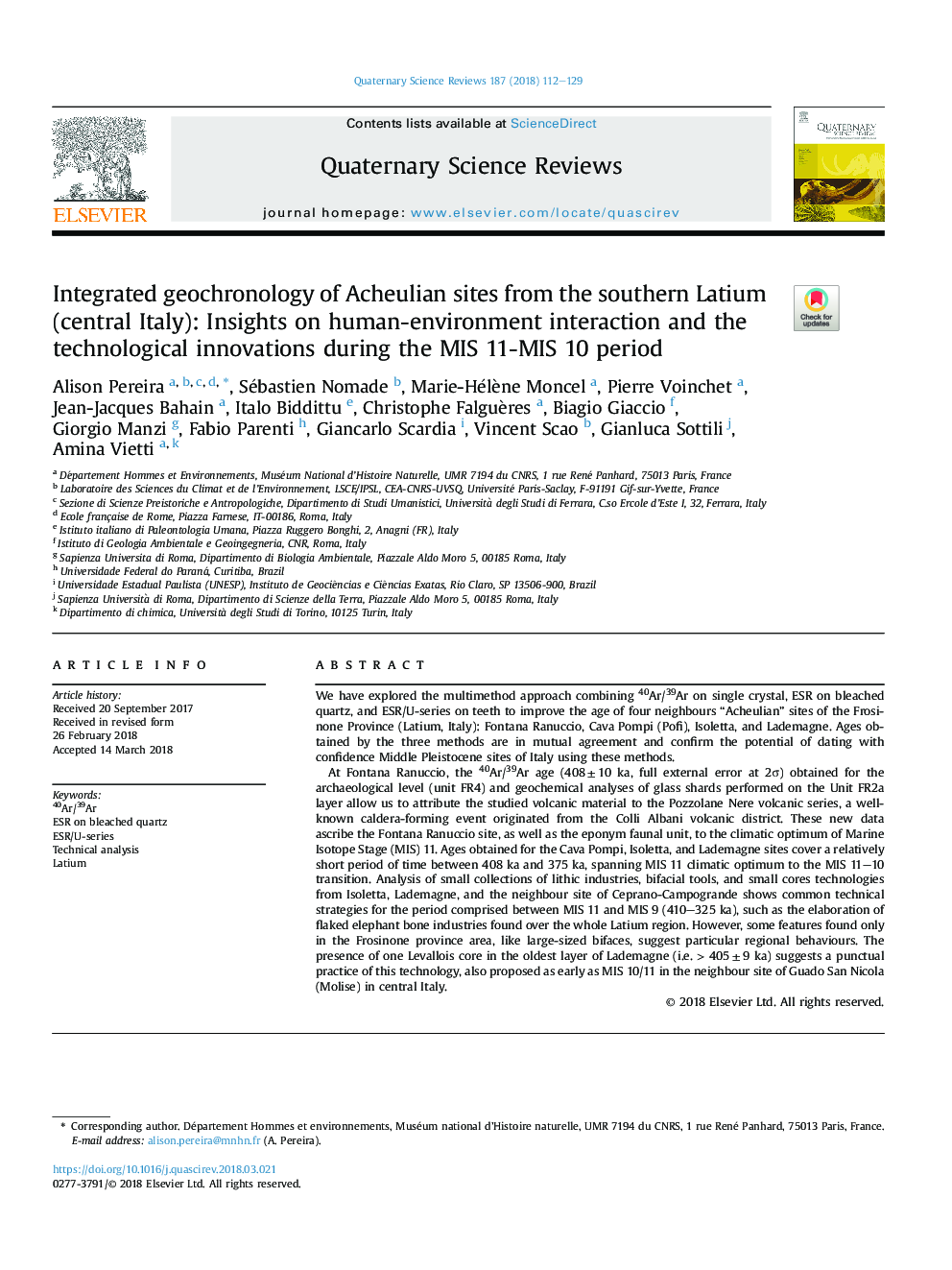| Article ID | Journal | Published Year | Pages | File Type |
|---|---|---|---|---|
| 8914863 | Quaternary Science Reviews | 2018 | 18 Pages |
Abstract
At Fontana Ranuccio, the 40Ar/39Ar age (408â¯Â±â¯10 ka, full external error at 2Ï) obtained for the archaeological level (unit FR4) and geochemical analyses of glass shards performed on the Unit FR2a layer allow us to attribute the studied volcanic material to the Pozzolane Nere volcanic series, a well-known caldera-forming event originated from the Colli Albani volcanic district. These new data ascribe the Fontana Ranuccio site, as well as the eponym faunal unit, to the climatic optimum of Marine Isotope Stage (MIS) 11. Ages obtained for the Cava Pompi, Isoletta, and Lademagne sites cover a relatively short period of time between 408 ka and 375 ka, spanning MIS 11 climatic optimum to the MIS 11-10 transition. Analysis of small collections of lithic industries, bifacial tools, and small cores technologies from Isoletta, Lademagne, and the neighbour site of Ceprano-Campogrande shows common technical strategies for the period comprised between MIS 11 and MIS 9 (410-325 ka), such as the elaboration of flaked elephant bone industries found over the whole Latium region. However, some features found only in the Frosinone province area, like large-sized bifaces, suggest particular regional behaviours. The presence of one Levallois core in the oldest layer of Lademagne (i.e. > 405â¯Â±â¯9 ka) suggests a punctual practice of this technology, also proposed as early as MIS 10/11 in the neighbour site of Guado San Nicola (Molise) in central Italy.
Related Topics
Physical Sciences and Engineering
Earth and Planetary Sciences
Geology
Authors
Alison Pereira, Sébastien Nomade, Marie-Hélène Moncel, Pierre Voinchet, Jean-Jacques Bahain, Italo Biddittu, Christophe Falguères, Biagio Giaccio, Giorgio Manzi, Fabio Parenti, Giancarlo Scardia, Vincent Scao, Gianluca Sottili, Amina Vietti,
